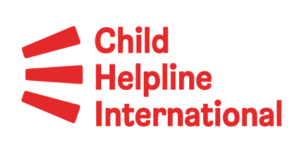Child helplines play a key role in the prevention, detection and victim support when it comes to addressing (online) child sexual exploitation and abuse, as discussed in this recent blog by my colleague, Ronja Ulvfot. In addition, child helplines also play a key role in collecting and analysing reliable, anonymous data on this highly sensitive issue to help develop relevant policy and practice. The data collected by child helplines are not only highly relevant in developing policy and practice – they also contribute to the accurate monitoring and impact assessment of initiatives to address (online) Child Sexual Exploitation and Abuse at the local, regional and global levels. In this blog, I will outline child helpline findings from the data on contacts received by our child helpline members between 2019 and 2021 that related to (online) child sexual exploitation and abuse.
Data collection and child helplines
On average, our child helpline members in Europe receive around 1.2 million counselling contacts every year. Counselling contacts are when a child helpline is able to provide psychosocial support to a child or young person, whether over the phone, or via webchat, SMS or some other form of communication. For each of these counselling contacts, child helplines collect data on the callers’ socio-demographics (such as age or gender), the reason for them making contact, whether any actions have been taken, and any other relevant information.
Child helpline data on (online) child sexual exploitation and abuse
Within our Violence category, four sub-categories relate to online or offline sexual exploitation and abuse: commercial sexual exploitation (offline), online sexual abuse, online sexual exploitation, sexual violence. Over the last three years, around a fifth of the counselling contacts received that related specifically to violence have concerned these different forms of sexual violence. This is over 90 000 contacts over the three-year period. The chart below presents the absolute number of these contacts received by child helplines in Europe from 2019 to 2021, by sub-category:

The sub-category where child helplines received the highest number of contacts was Sexual violence. This sub-category does not involve any element of the internet or online environment but happens strictly “offline”. The sub-categories that do contain an online element, online sexual abuse and online sexual exploitation, represent about 2-4% of all violence contacts (or n=16 963). As mentioned, on average, contacts related to (online) child sexual exploitation and abuse represent around one fifth of contacts within the violence category. This proportion slightly decreased in 2020, but increased again in 2021, almost reaching the pre-pandemic levels of 2019. This trend seems largely due to the sub-category of Sexual violence (offline), as the sub-categories of online sexual abuse and exploitation saw their trends remain stable at rather low levels over time.
Gender
The table below presents the overall number of (Online) Child Sexual Exploitation and Abuse-related contacts, disaggregated by gender. A clear trend shows that most contacts about (Online) Child Sexual Exploitation and Abuse are made by girls. This trend remained stable over time from 2019 to 2021.

OCSEA: Addressing Low Prevalence
The role of child helplines in prevention, detection and victim support in relation to online child sexual exploitation and abuse (OCSEA) is clear: child helplines have an important role in explaining to children and concerned adults what they can do, how reporting works to platforms and law enforcement, and provide psycho-social support and intervention. But, according to our findings, only a small number of the contacts to child helplines that relate to sexual abuse and exploitation represent online child sexual exploitation and abuse (OCSEA) – about 2-4% of all violence contacts or n=16 963, throughout 2019-2021. This is not an accurate representation of prevalence in society, where it is estimated that 1-20% of children are subjected to online child sexual exploitation and abuse. To address this issue from a data collection perspective, we are launching a study into barriers of reporting OCSEA to child helplines, including exploring if there are data categorisation issues. For example, OCSEA contacts could be categorised as other forms of violence or online issues that they often co-occur with, and, when pressed with a choice, counsellors may prioritise the offline aspect of the violence situation, rather than the online element of it.
To learn more about this research, email data@childhelplineinternational.org
Andrea Pereira
Head of Data & Research


